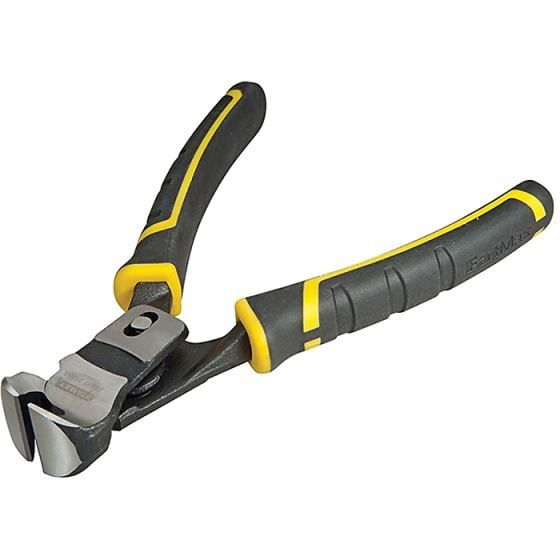From Electrical to Automotive: The Widely Applicable Nature of Crimping Pliers
What are Crimping Pliers?
Basics in Detail
In brief, crimping pliers or tools refer to manually operated crimping instruments for deformation, intended for two different materials in connecting and fastening to join another onto the end of the wire. Crimping is to establish strong connection of wire-to-connector where an electric bond needs not to be soldered together but only connected firm. These tools compress the crimp connector onto the wire using mechanical force, creating a solderless connection that is suitable for applications that involve vibrations and moisture. These are perfect for both professional and DIY settings.
Crimping Pliers in Electrical Wiring: How to Make Strong, Reliable Connections
Crimping pliers are crucial in electrical work because they ensure a good solid connection between wires and terminals. In fact, the pliers will allow you to connect your wires with safety and security on outlets, junction boxes, and circuit boards, hence ensuring a long-lasting connection. Crimping pliers offer an easy method of connection compared to traditional soldering that can take more time and needs some technical skills.
Automotive Applications: Simplifying Auto Repairs and Installation with Crimping Pliers
The crimping pliers are indispensable in the automotive line due to their use in connecting electrical components in vehicles. Whether installing sensors, wiring lights, or simply fixing the car's electrical system, crimping makes the job faster and more efficient. Such secure and moisture-resistant connections are, on the other hand, crucial in automotive repairs, more so if the system must be sustainable in adverse environments for extended periods.
Why Every Professional Needs Crimping Pliers: Versatility Across Industries
Crimping pliers are not only used in electrical and automotive industries. They are also widely used in networking, telecommunications, and industrial sectors. Crimping tools help professionals establish secure connections for coaxial cables, network cables, and industrial equipment. Their ease of use, combined with the reliability of the crimped connection, makes them a must-have tool for any technician or DIY enthusiast.
Tips and Tricks for Using Crimping Pliers Effectively in Different Sectors
To get the maximum out of crimping pliers, there are some good guidelines that should be followed:
Choose the Right Crimping Die: The appropriate die for the crimping tool will vary from application to application, and as stated earlier, different connectors and wire types call for different crimping dies.
Strip the Wire Properly: Strip a portion of the wire to the appropriate length before inserting it into the connector for a tight and firm fit.
Use Quality Connectors: High-quality connectors should always be used to make sure that the crimped connection is solid and strong.
Proper Pressure Application: Ensure the use of crimping pliers properly applied with enough pressure to attach the connector securely without damaging the wire.
Conclusion
From electrical to automotive and network engineering up to telecommunication, crimping pliers become inevitable to numerous fields in our industrial applications. Offering speed, reliability, and a solderless connection that provides efficiency to this conventional methods; whether it be used in industrial purposes or domestic by means of excellent high quality of the plier's manufacturing and guarantee safety on any connection with any wiring material or object.
FAQs
Crimping pliers have been designed in a way so as to clamp connectors on wires, giving them a sure and tight electrical connection. A regular plier is used to grip and twist an object. They cannot be used to crimp connectors on the wires.
2. Can crimping pliers be used for all types of wiring?
2. Can crimping pliers be used for all types of wiring?
Yes, crimping pliers can be used for a variety of wiring types, including electrical, automotive, and network cables. It is essential to use the correct crimping die for the specific wire and connector type.
3. How do I keep my crimping pliers in good condition?
3. How do I keep my crimping pliers in good condition?
Clean the jaws of the pliers often with a wire brush to get rid of the dirt. Use a lubricant to keep moving parts running smoothly and dry places to prevent rusting.
Sonia is very passionate and well-experienced about blogging, having done it for over five years. She has published more than 3,000 articles, many of which are with a focus on tools and their applications. She tries to share deep insights into different niches, including gripping and crimping pliers, in her blog. Sonia emphasises inspiring and educating her readers with useful, very well-researched content in her blogs.
Author
Sonia is very passionate and well-experienced about blogging, having done it for over five years. She has published more than 3,000 articles, many of which are with a focus on tools and their applications. She tries to share deep insights into different niches, including gripping and crimping pliers, in her blog. Sonia emphasises inspiring and educating her readers with useful, very well-researched content in her blogs.



.jfif)

.jfif)




Comments
Post a Comment